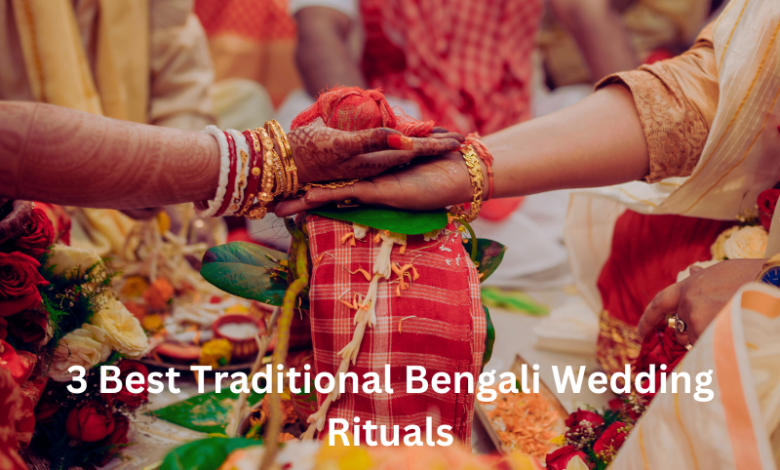
3 Best Traditional Bengali Wedding Rituals
The Bengali wedding experience steeped in tradition and emotion welcomes you into a world where every moment is cherished. Among the myriad of customs that make up this rich cultural tapestry, three rituals stand out for their deep cultural significance.
Aiburo Bhaat, also known as the bride or groom’s last meal as a single person, is a lavish feast rich in tradition and symbolism.
Gaye Holud, the turmeric ceremony, is a lively and joyful event filled with music, dancing, and the application of turmeric paste to the couple’s skin.
Finally, Subho Drishti, the first look between the bride and groom, is a moving and emotional moment that marks the start of their life together. These rituals offer more than just visual beauty; they hold deep meaning and significance in Bengali culture, symbolizing the union of two families in a celebration of love and togetherness.
Key Takeaways
- Aiburo Bhaat celebrates the bride or groom’s last meal as a bachelor, emphasizing community and family bonds.
- Gaye Holud involves the ceremonial application of turmeric paste, symbolizing purification and auspiciousness.
- Subho Drishti marks the couple’s first eye contact, representing the beginning of their lifelong journey together.
- Aiburo Bhaat features a lavish meal of traditional Bengali dishes, highlighting sharing and togetherness.
- Gaye Holud is characterized by vibrant yellow decorations and traditional songs and dances.
Aiburo Bhaat
Aiburo Bhaat, a pre-wedding feast celebrating the bride or groom’s last meal as a bachelor, is a cherished tradition that reflects Bengali culture’s deep-rooted emphasis on community and family bonds.
You’ll notice the bride or groom adorned in traditional attire, often a beautiful saree or kurta, signifying respect for cultural heritage.
During the beginning of the feast, parents bestow their blessings, symbolizing their support and love for the new phase ahead.
The meal itself is lavish, featuring an array of traditional Bengali dishes, emphasizing the importance of sharing and togetherness.
This ritual not only fortifies family ties but also serves as a poignant reminder of the shift from one life stage to another, encapsulating the essence of Bengali customs.
Are you getting ready to be married? Find out your partner from the best Matrimony site in Bangladesh.
Gaye Holud
In Bengali weddings, the Gaye Holud ceremony involves applying turmeric paste to the bride and groom. This ceremony symbolizes purification and good fortune. Family and friends gather to lovingly apply the turmeric paste, enhancing the couple’s natural glow and blessing them for a happy and prosperous married life.
The event is marked by:
- Singing traditional songs
- Dancing to folk tunes
- Sharing sweets and snacks
- Decorating with vibrant yellow and orange hues
- Wearing matching outfits in yellow
Subho Drishti
Gazing into each other’s eyes for the first time as a married couple, Subho Drishti represents a poignant and emotionally charged moment in Bengali weddings, symbolizing the beginning of a lifelong journey together.
This ritual is rich in cultural significance, where the bride and groom’s eye contact marks a sacred moment of mutual acceptance and understanding.
During this ceremony, the bride, traditionally carried on a wooden stool called a piri, circles the groom seven times before they lock eyes.
This act is more than symbolic; it serves to anchor their connection, reflecting the unity and bond they’ll nurture.
It’s a beautiful blend of tradition and emotion, making Subho Drishti a cherished part of Bengali wedding rituals.
Conclusion
In traditional Bengali weddings, Aiburo Bhaat, Gaye Holud, and Subho Drishti are like vibrant threads weaving together a rich tapestry of love and unity.
These rituals aren’t just customs; they’re heartfelt expressions of community and familial bonds.
As you witness these ceremonies, you’ll feel the warmth and deep-rooted significance, much like the comforting embrace of a cherished family heirloom, connecting generations and celebrating the beauty of togetherness.









